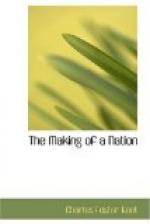Each of the Biblical narrators seems to be seeking also by means of these illustrations to teach certain universal moral and religious truths. In this respect the two variant Biblical narratives are in perfect agreement. The destruction of mankind came not as the fiat of an arbitrary Deity, but because of the purpose which God had before him in the work of creation, and because that purpose was good. Men by their sins and wilful failure to observe his benign laws were thwarting that purpose. Hence in accord with the just laws of the universe their destruction was unavoidable, and it came even as effect follows cause. On the other hand, these ancient teachers taught with inimitable skill that God would not destroy that which was worthy of preservation.
In each of the accounts the character of Noah stands in striking contrast with those of his contemporaries. The story as told is not merely an illustration of the truth that righteousness brings its just reward, but of the profounder principle that it is the morally fit who survive. In both of the versions Noah in a very true sense represents the beginning of a new creation: he is the traditional father of a better race. To him are given the promises which God was eager to realize in the life of humanity. In the poetic fancy of the ancient East even the resplendent rainbow, which proclaimed the return of the sun after the storm, was truly interpreted as evidence of God’s fatherly love and care for his children. In the light of these profound religious teachings may any one reasonably question the right of these stories to a place in the Bible? Did not Jesus himself frequently use illustrations drawn from earlier history or from nature to make clear his teachings? Is it not evidence of superlative teaching skill to use that which is familiar and, therefore, of interest to those taught, in order to inculcate the deeper moral and religious truths of life?
V.
SURVIVAL OF THE FITTEST IN THE NATURAL WORLD.
It is interesting and illuminating to note how the ancient Hebrew prophets in their religious teaching forecast the discoveries and scientific methods of our day. This was because they had grasped universal principles.
Since the memorable evening in July, 1858, in which the views of Darwin and Wallace on the principles of variation and selection in the natural world were sent to the Linnaean Society in London, the leading scientists have laid great stress upon the doctrine of the survival of the “fittest” as the true explanation of progress in the natural world. It was apparently made clear by Darwin, and supported by sufficient evidence, that “any being, if it vary however slightly, in any manner profitable to itself, under the complex and somewhat varying conditions of life, will have a better chance of surviving, and thus be naturally selected.”




